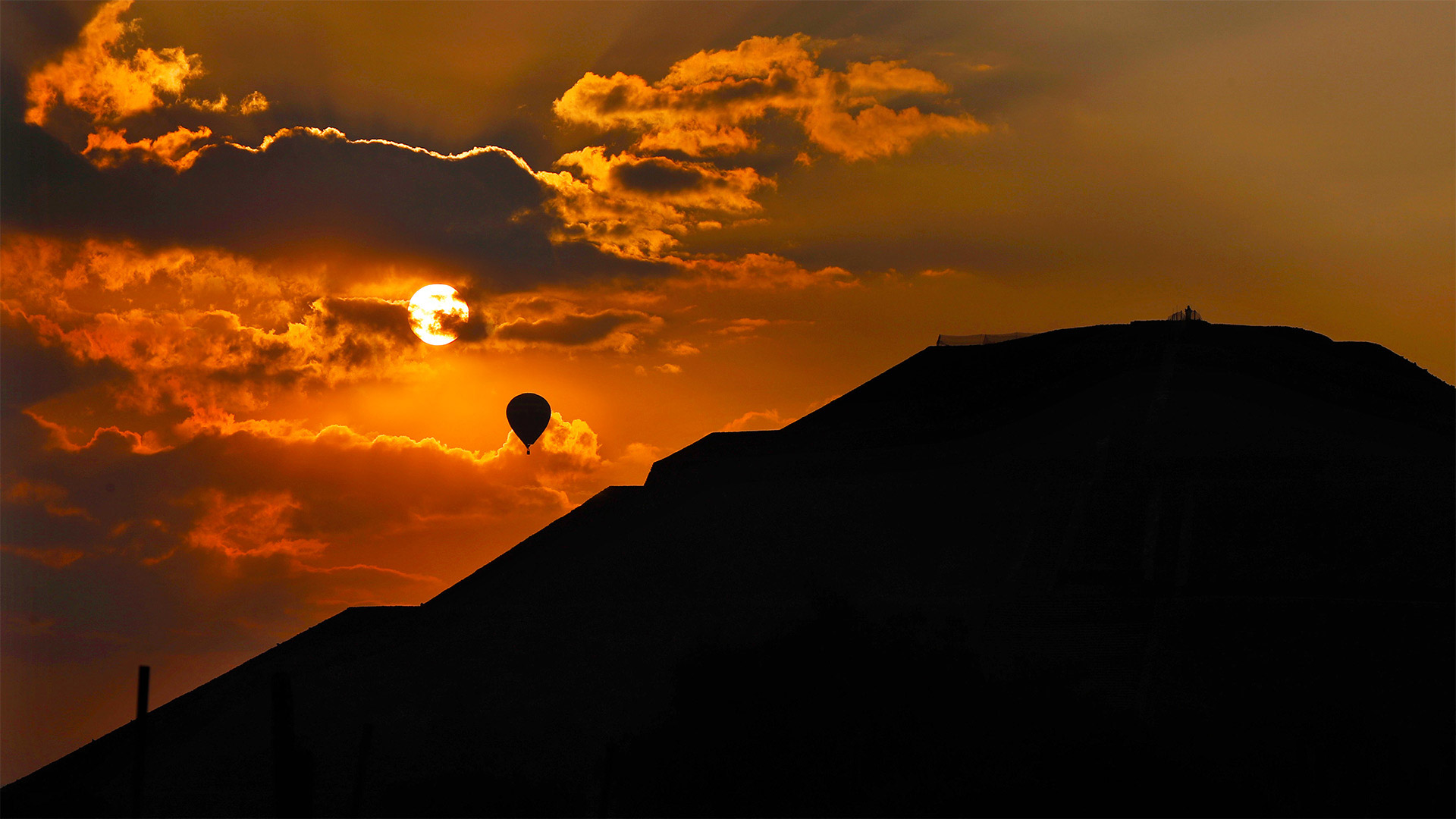一个气球在特奥蒂瓦坎日出时飞越太阳金字塔,墨西哥气球在特奥蒂瓦坎日出时飞越太阳金字塔 A balloon flies over the Pyramid of the Sun at sunrise in Teotihuacan, MexicoA balloon flies over the Pyramid of the Sun at sunrise in Teotihuacan, Mexico (©

一个气球在特奥蒂瓦坎日出时飞越太阳金字塔,墨西哥气球在特奥蒂瓦坎日出时飞越太阳金字塔 A balloon flies over the Pyramid of the Sun at sunrise in Teotihuacan, Mexico (© Marco Ugarte/AP Photo)
Ringing in the New Year at Teotihuacan
If the Aztecs had hot air balloons, they may well have greeted the new year like this—floating above the massive Sun Pyramid at sunrise today, the first day of the year according to the Aztec calendar. Also known as Yancuic Xihuitl, the Aztec New Year is still celebrated by some Indigenous Nahua communities here in central Mexico with songs, dances, and the flames of 'ocote' (pitch-pine) candles. Dancers wear colorful traditional costumes topped by quetzal feather headdresses, and celebrants greet the New Year by making loud noises with seashells, just as Aztecs did centuries ago. It's one of the many expressions of pre-Columbian tradition that managed to survive the Spanish conquest and modern erosion of Indigenous customs.
The Sun Pyramid is the largest structure in the ancient city that Aztecs called Teotihuacan (which means, roughly, 'birthplace of the gods'). The 8-square-mile site also contains other important pyramids, plazas, temples, palaces, and a complex network of underground tunnels. As grand a city as it once was, when the Aztecs arrived here in the 1400s, Teotihuacan had been abandoned for centuries. Its precise origins are a mystery, but it was first built by an unknown civilization sometime around 400 BCE. By 400 CE, Teotihuacan had become a center of industry and trade, the largest and most powerful city in the Americas and probably the sixth largest in the world. But by around 550 CE, its major monuments were sacked and deliberately burned, the magnificent pyramids and temples deserted—at least until the Aztecs arrived.
在特奥提华肯新年钟声响起
如果阿兹特克人有热气球的话,他们很可能在今天日出的时候,也就是阿兹特克日历上一年的第一天,像这样漂浮在巨大的太阳金字塔上迎接新年。阿兹特克新年也被称为Yancuic Xihuitl,墨西哥中部的一些土著Nahua社区仍然用歌声、舞蹈和“ocote”(沥青松)蜡烛的火焰来庆祝。舞者们穿着色彩鲜艳的传统服装,头上戴着羽绒头饰,庆祝者用贝壳发出响亮的声音迎接新年,就像几个世纪前阿兹特克人所做的那样。这是许多前哥伦布传统的表达方式之一,这些传统在西班牙征服和现代土著习俗的侵蚀下得以幸存。
太阳金字塔是古城中最大的建筑,阿兹特克人称之为特奥提瓦坎(大致意思是“神的诞生地”)。这个8平方英里的遗址还包括其他重要的金字塔、广场、寺庙、宫殿和复杂的地下隧道网络。当阿兹特克人在14世纪来到这里时,特奥提瓦坎曾经是一座宏伟的城市,但它已经被遗弃了几个世纪。它的确切起源是个谜,但它最初是由公元前400年左右的一个未知文明建造的。到公元400年,特奥蒂瓦坎已经成为一个工业和贸易中心,美洲最大和最强大的城市,可能是世界第六大城市。但到公元前550年左右,它的主要纪念碑被洗劫一空,并被蓄意烧毁,宏伟的金字塔和寺庙被遗弃,至少直到阿兹特克人到来。
评论已关闭